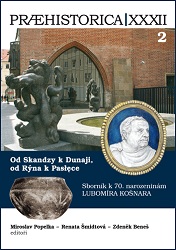K počiatkom metalurgie železa na Spiši
About the Beginnings of Iron Metallurgy in the Spiš Region
Author(s): Peter RothSubject(s): Economic history, Social history, Ancient World, Economic development
Published by: Univerzita Karlova v Praze, Nakladatelství Karolinum
Keywords: Northern Slovakia; Spiš; settlement; Hallstatt period; Early and Middle La Tène period; metallurgy;
Summary/Abstract: The former Spiš county was located in present-day north-eastern Slovakia, in the area around the upper reaches of the Poprad and Hornád rivers. The county was famous for iron mining and processing during several historical periods – the Púchov culture era (between the 2nd century BC and the 1st century AD) being one of the oldest of them. Of course, beginnings of iron metallurgy in this area have been traced back to the Halstatt and early-to-middle La Tene cultures – the so-called pre-Púchov stage. Despite the fact, that first materials mentioning settlement in this region during those times date to the end of the 19th and first half of the 20th century, knowledge about those activities is rather scarce and today’s research concerning those activities has to be based on fragmentary and in many cases hardly, if ever, verifiable data. Basically only one site has seen a serious research focused on settlement and iron metallurgy. However, even this scanty data makes it possible to determine the characteristics of the settlement and the beginnings of iron metallurgy, but it is not possible to ascertain the methods of iron mining in the Spiš county – the methods that were later further developed during the aforementioned Púchov culture, the early Roman era, and then the Medieval and Modern periods, when the Spiš and Gemer counties were considered the “iron counties” of the Kingdom of Hungary.
Journal: Praehistorica
- Issue Year: 32/2014
- Issue No: 2
- Page Range: 277-284
- Page Count: 8
- Language: Czech

